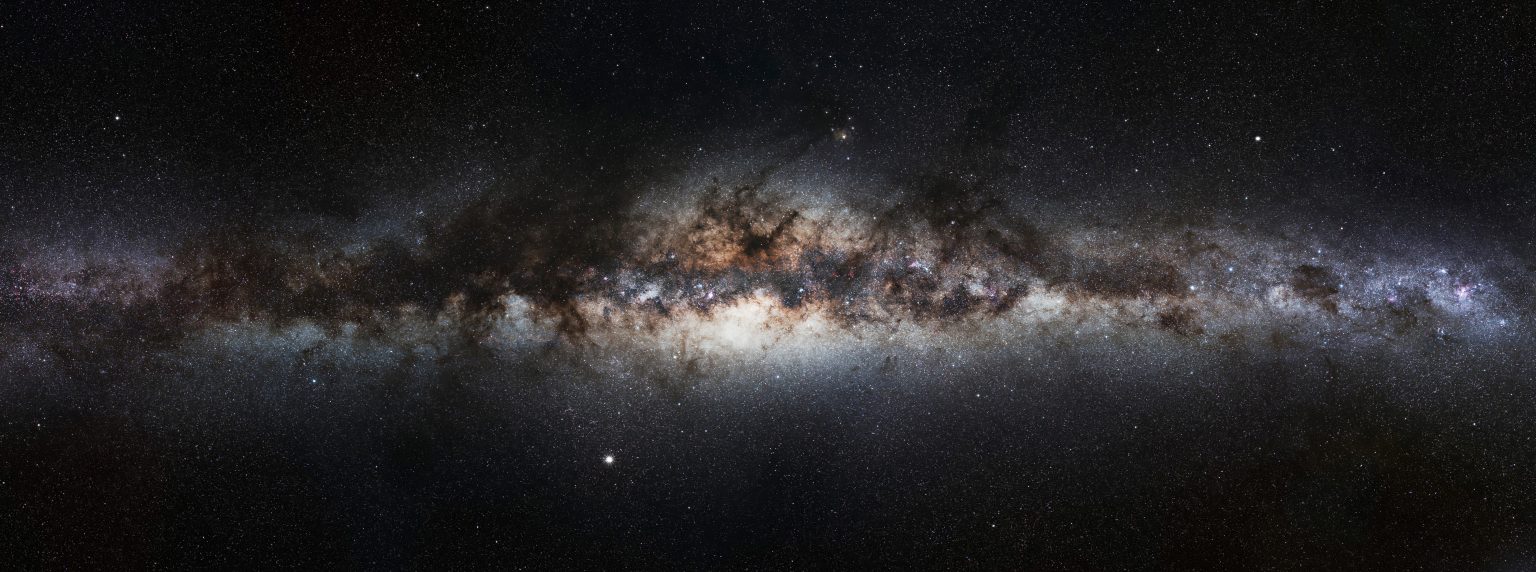
Welcome to our Milky Way…
Covering the entire southern and northern celestial sphere, this gorgeous starscape serves as the ultimate high-resolution view of the cosmic landscape that surrounds our tiny blue planet.
Using data from GigaGalaxy Zoom project (ESO), and post-processing by Pablo Carlos Budassi we are presenting this new render with our particular style in terms of color and proportions.
This unique projection place the viewer in front of our Galaxy with the Galactic Plane running horizontally through the image — almost as if we were looking at the Milky Way from the outside.
From this vantage point, the general components of our spiral galaxy come clearly into view, including its disc, marbled with both dark and glowing nebulae, which harbours bright, young stars, as well as the Galaxy’s central bulge and its satellite galaxies.
The high resolution image contains 18 million pixels. Data collection and processing credits go to ESO and S. Brunier.
[ Prints available ]
▾ zoom and explore the full picture ▾
It’s a patchy, pale river in the sky…
This composite image is also available in 3 separate metal prints:
Milky Way Panorama
* All products and downloads are delivered in excellent quality and without watermarks.
* Share this page to a friend using the following link:
* This was a high resolution 360-degree panoramic view of our galaxy. If you want to see the galaxy from above, check our Map of the Milky Way Galaxy
* Check out other graphics from our team here














